In today’s fast-paced world, where schedules are packed and screens often replace the great outdoors, there’s an age-old secret that holds the key to your child’s holistic development—sensory play. It’s not just about making a mess; it’s about making memories and building the foundation for a bright future. In this blog post, we’ll explore the magic of sensory play, its profound importance, and the many benefits it brings to your child’s life.
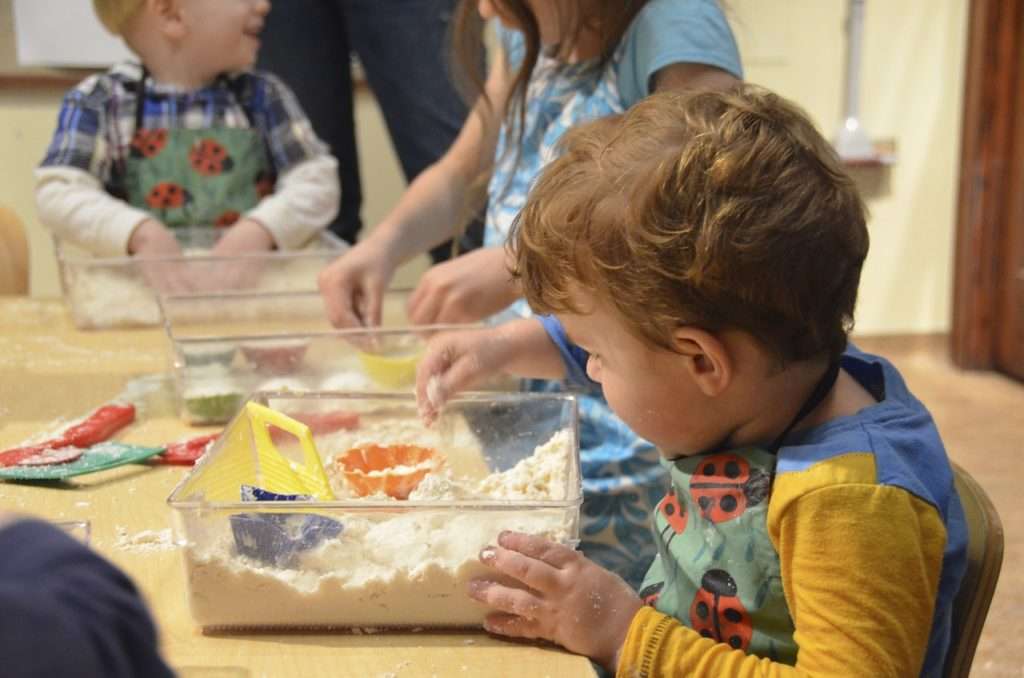
What is Sensory Play?
The Five Senses of the Body
To understand sensory play better, let’s briefly explore the five senses and their significance:
1. Sight (Vision)
Sight allows us to perceive the world around us, distinguishing colors, shapes, and patterns.Sensory activities that stimulate sight include colorful art projects, visual puzzles, and exploring nature.
2. Sound (Hearing)
Hearing enables us to detect and interpret sounds, from music to spoken words.Activities like listening to music, playing musical instruments, and identifying sounds in the environment nurture the sense of hearing.
3. Touch (Tactile)
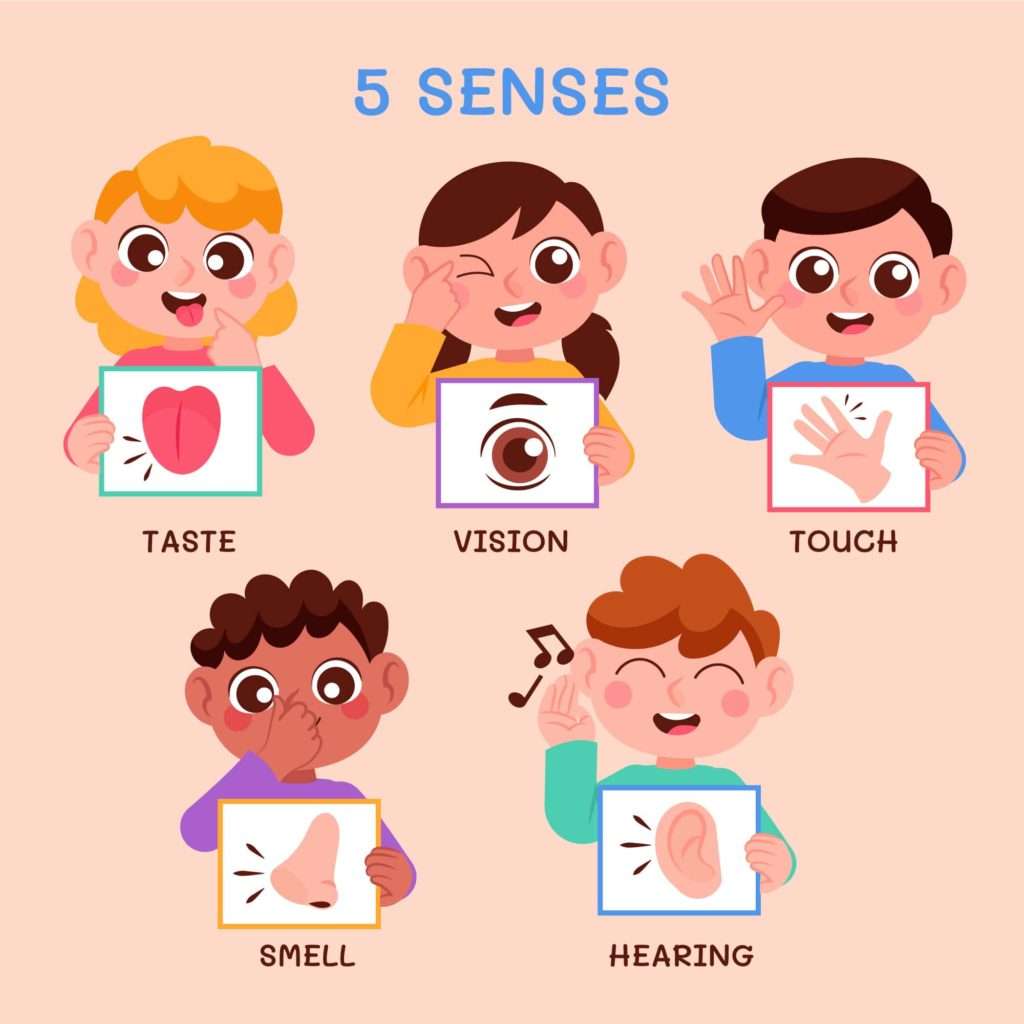
The sense of touch helps us perceive texture, temperature, and pressure.Activities involving touch include playing with different textures, molding clay, and finger painting.
4. Taste (Gustation)
Taste allows us to savor and identify various flavors.Sensory activities that engage taste include cooking, baking, and trying different foods.
5. Smell (Olfaction)
Smell lets us detect scents and odors in the environment.Exploring scented playdough, flowers, and spices can awaken the sense of smell.
Types of Sensory Activities
Visual Stimulation
Visual sensory play includes activities like:
- Color Sorting: Sorting objects by color helps children recognize and categorize different shades.
- Art Exploration: Painting and drawing stimulate creativity and visual perception.
- Sensory Bottles: Filling bottles with colored liquids and glitter creates mesmerizing visual effects
Auditory Experiences
Auditory sensory play involves:
- Musical Instruments: Playing musical instruments like xylophones and drums helps develop a child’s sense of rhythm and sound recognition.
- Sound Guessing Game: Blindfolded children guess sounds made by various objects, enhancing auditory discrimination.
Tacticle Engagment
Tactile sensory activities include:
- Playdough Play: Kneading and shaping playdough boost fine motor skills and tactile sensitivity.
- Texture Boards: Exploring different textures, such as soft fur or rough sandpaper, stimulates tactile awareness.
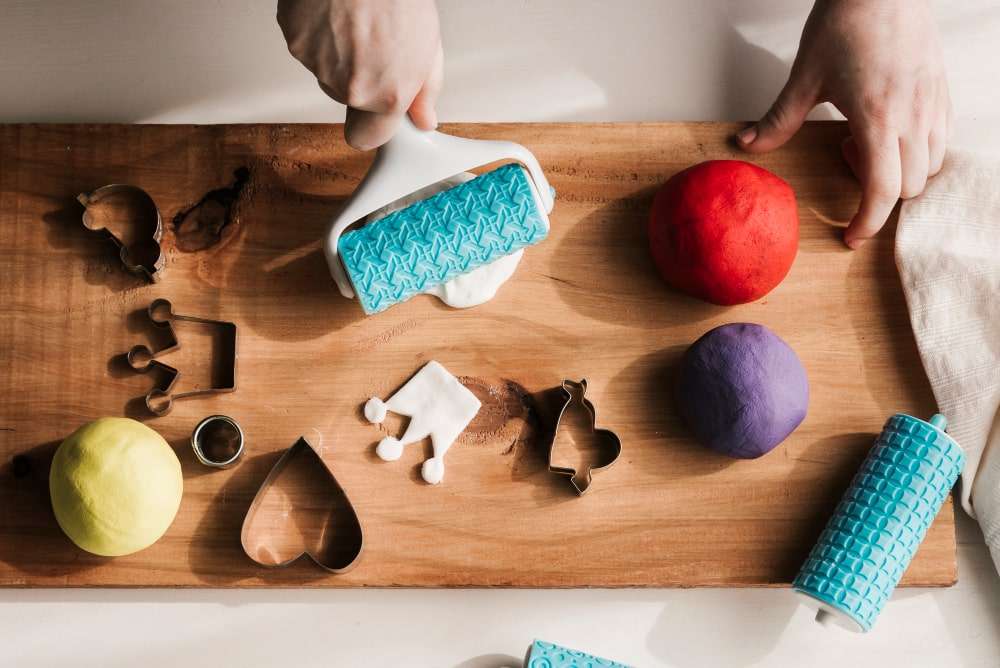
Playing with playdough is essential for kids.It helps them learn and have fun at the same time. Through molding, shaping, and manipulating playdough, kids develop fine motor skills, hand-eye coordination, and sensory awareness.
Taste and Smell Adventures
Exploring taste and smell sensory activities includes:
- Cooking with Kids: Involving children in the kitchen engages their taste and smell senses as they explore new flavors and aromas.
- Scented Playdough: Adding scents to playdough enhances the sensory experience.
Sensory Play Ideas for Kids
Here are some delightful sensory play ideas to try with your child :
1. Texture Exploration
Fill a container with various textured materials like rice, sand, or pasta.Let your child run their fingers through it, describing how each texture feels.
This simple activity enhances tactile awareness and language development.
2. Messy Play with Paint

Roll up those sleeves, put on aprons, and let your little artist unleash their creativity with finger painting.The vibrant colors and squishy paint engage their sense of touch and sight, while also encouraging self-expression.
3. Sensory Baking
Bake cookies or bread together, allowing your child to mix, knead, and taste the ingredients.The smell of freshly baked goodies and the tactile experience of working with dough create a delightful sensory adventure.
4. Sound Scavenger Hunt
Head outdoors and listen carefully. Encourage your child to identify different sounds, from birds chirping to leaves rustling.This activity sharpens auditory discrimination and connects your child with nature.
Sensory Toys : fidget spinner, pop tubes, sensory slug ,kinetic sand and many more
Sensory toys are the tools that make sensory play possible. They come in various forms and serve different purposes, all aimed at stimulating the senses and promoting development. Here are some key benefits of using sensory items:
1. Engagement and Focus
Sensory items captivate children’s attention and keep them engaged for longer periods. This focused attention is essential for learning and skill development.
2. Stress Relief
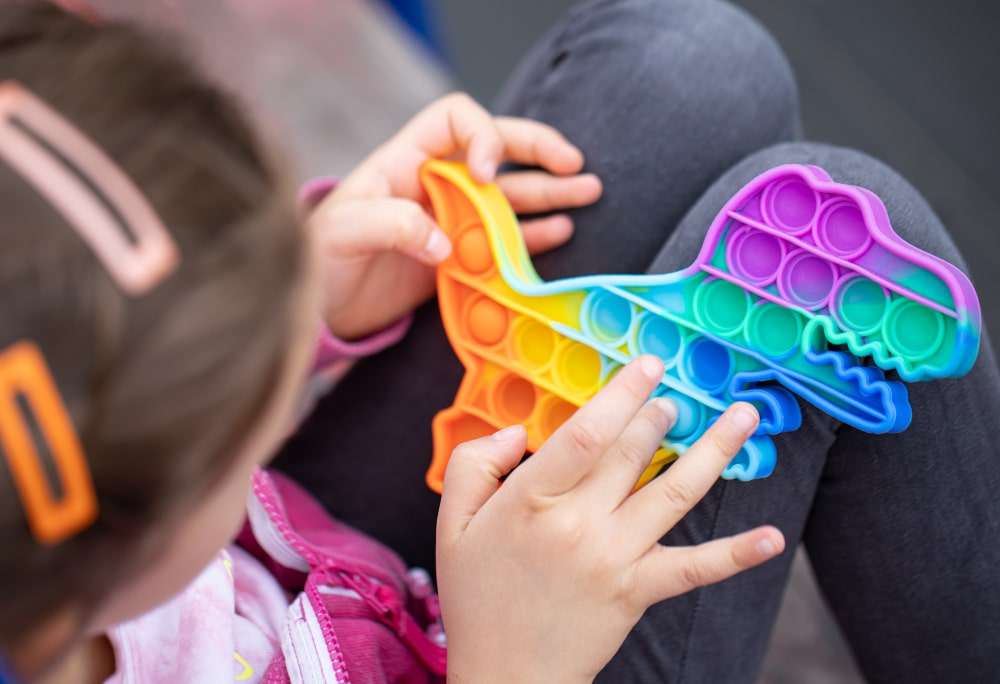
Certain sensory items, like stress balls or fidget toys, are excellent stress relievers. They provide an outlet for pent-up energy and tension, promoting relaxation and emotional well-being.
3. Customization
Sensory items can be tailored to meet individual needs. Whether your child is hypersensitive or hyposensitive to sensory input, you can choose items that suit their preferences and comfort levels.
4. Therapeutic Benefits
Sensory items are widely used in sensory therapy for children with sensory processing disorders. They can help regulate sensory input and improve a child’s ability to cope with various stimuli.
The Impact of Sensory Activities on Child Development
A child’s earliest years are incredibly vital for their growth and learning. Sensory play during this period has profound and lasting benefits.Let’s dive into the heart of the matter: Why is sensory play so important?
Cognitive Development
Sensory activities are like brain workouts for children. When children engage with various textures, shapes, and materials, they’re learning about cause and effect, patterns, and problem-solving. As they manipulate objects and experiment with different materials, their brains are forming vital connections. The brain undergoes rapid development in early childhood. Sensory play helps build neural connections, enhancing a child’s capacity for learning and problem-solving.

Emotional Regulation
Sensory play offers a safe space for children to explore and express their emotions. Whether it’s squeezing a stress ball or playing with kinetic sand, these activities help children understand and manage their feelings. It’s a constructive way for them to process their feelings and develop emotional intelligence. This emotional intelligence is a crucial life skill that benefits them in adulthood.
Motor Skills Enhancement
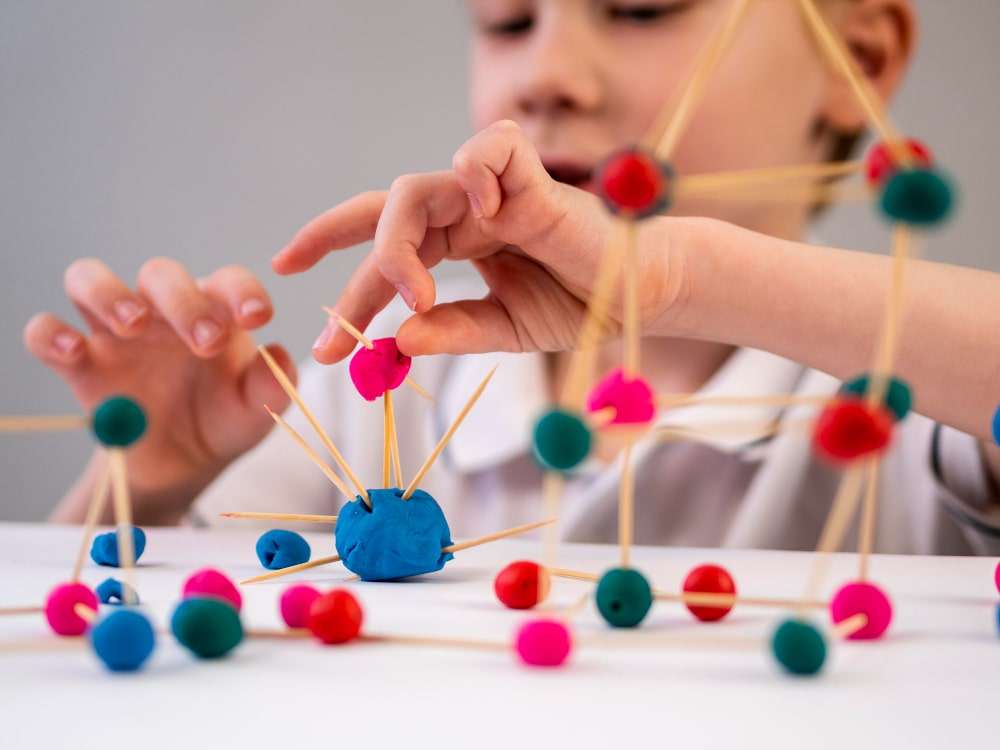
Engaging in sensory activities supports physical health by promoting fine and gross motor skills, balance, and coordination.Fine and gross motor skills are essential for daily life and academic success. Sensory play, with its hands-on activities, strengthens these skills. Pouring, scooping, and building with sensory materials all contribute to better hand-eye coordination and dexterity.
Language Development
Engaging in sensory play fosters language development. As children describe the sensations they experience—whether it’s the sliminess of gooey slime or the crunchiness of dried leaves—they expand their vocabulary and communication skills.
Social Skills
Sensory play often involves interaction with peers or caregivers. This social engagement improves communication skills, cooperation, and empathy.
Creativity and Imagination
Sensory play encourages creativity and imagination to flourish. When children are free to explore and experiment, they come up with new ideas, stories, and scenarios. This sparks their creativity and lays the groundwork for innovative thinking in the future.
The Importance of Messy Play
Messy play often goes hand in hand with sensory play, and it’s more than just a source of amusing anecdotes for parents. Messy play is a crucial component of sensory development for several reasons:
Sensory Exploration
Messy play encourages children to dive headfirst into sensory experiences. Whether it’s squishing mud between their fingers or painting with their hands, messy play invites them to explore textures, temperatures, and sensations.
Creativity Unleashed
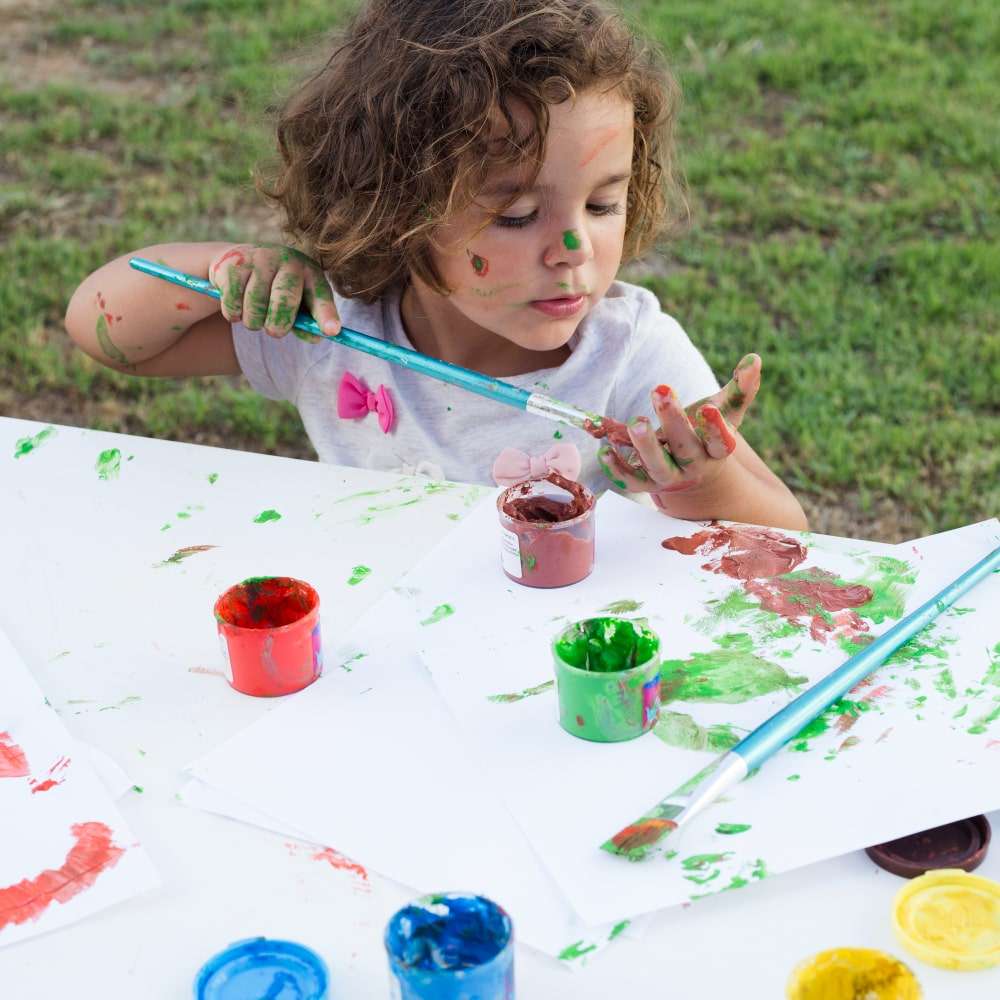
Messy play fosters creativity without boundaries. When children are free to make a mess, they’re free to create whatever their hearts desire. This unstructured creativity is invaluable.
Stress Reduction
Messy play can be a therapeutic outlet for stress and anxiety.Messy play, like squishing playdough or finger painting, helps children relax and feel less stressed because it lets them have fun and express themselves freely, without worrying about making a mess. When kids explore and create with messy materials, it can be a soothing and joyful way for them to release tension and enjoy themselves.
Learning Through Play
Through messy play, children learn about cause and effect, trial and error, and even basic chemistry (think mixing colors). It’s hands-on learning at its best.
Incorporating sensory activities into a child’s daily routine can have a profound and positive impact on their development. From cognitive growth to emotional regulation and motor skills enhancement, the power of play, especially through sensory activities, is truly remarkable. It’s the joyful journey of exploration, discovery, and growth that every child deserves. So, embrace the mess, celebrate the creativity, and let your child’s senses come alive through the magic of sensory play. Watch as they flourish into confident, curious, and resilient individuals, all thanks to the power of play.Intrigued by the wonders of sensory play? Dive into our collection of sensory play ideas and sensory items to kickstart your child’s sensory adventure.
Remember, the mess may be temporary, but the benefits of sensory play last a lifetime.
FAQs
At what age can children start sensory activities?
Sensory activities can begin as early as infancy with activities like tummy time and exploring different textures.
How can I create sensory activities at home?
You can create sensory activities at home using everyday items like rice, beans, water, and various textures.
Are sensory activities beneficial for children with support needs?
Yes, sensory activities can be particularly helpful for children with functional needs as they can promote sensory integration and emotional regulation.
Should sensory activities be supervised?
It’s advisable to supervise sensory activities, especially for younger children, to ensure safety and provide guidance.
Can sensory activities replace traditional learning methods?
While sensory activities are important for holistic development, they should complement, not replace, traditional learning methods like reading and mathematics.
